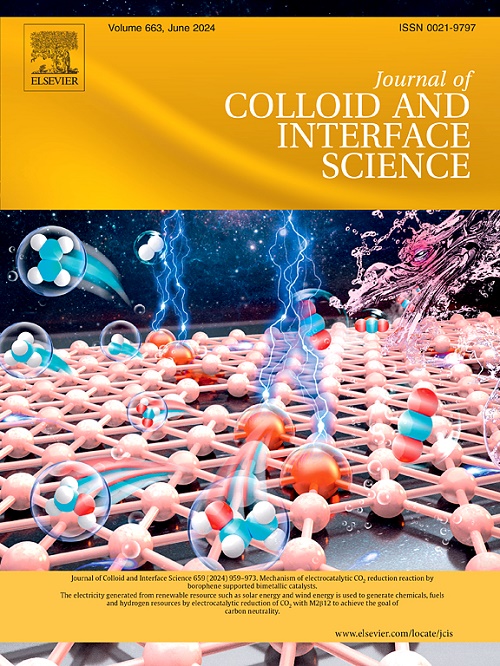Modulation of the structure and morphology of NiCo2S4 by varying the anion types of nickel and cobalt salts to achieve high-rate supercapacitive performance
IF 9.4
1区 化学
Q1 CHEMISTRY, PHYSICAL
引用次数: 0
Abstract
In this work, the structure and morphology of NiCo2S4 (NCS) were modulated by varying the anion types (Cl−, CH3COO−, and NO3−) of nickel and cobalt salts. Extensive material characterization and analyses revealed that the grain size of the obtained NCSs was determined by different solvation free energies, capping effects, and steric hindrance during the crystal growth process. Among these three anions, Cl−, with the smallest ionic size, exhibited the lowest capping effect, steric hindrance, and solvation free energy, leading to the largest average grain size of 15.34 nm for Cl−-based NiCo2S4 (NCS-C). Moreover, the sea urchin-like morphology of NCS-C provided a high reaction interface for electrochemical energy storage. As a result, the specific capacitance of NCS-C could reach 1112.4 F/g at a current density of 6 A/g, retaining 692 F/g even at a high current density of 16 A/g. The assembled asymmetric supercapacitor could also deliver a high energy density of 23.4 Wh kg−1. This work highlights the significant influence of anion type on the structural and morphological evolution of NCS materials, providing new insights for the development of high-rate NCS-based electrode materials.

求助全文
约1分钟内获得全文
求助全文
来源期刊
CiteScore
16.10
自引率
7.10%
发文量
2568
审稿时长
2 months
期刊介绍:
The Journal of Colloid and Interface Science publishes original research findings on the fundamental principles of colloid and interface science, as well as innovative applications in various fields. The criteria for publication include impact, quality, novelty, and originality.
Emphasis:
The journal emphasizes fundamental scientific innovation within the following categories:
A.Colloidal Materials and Nanomaterials
B.Soft Colloidal and Self-Assembly Systems
C.Adsorption, Catalysis, and Electrochemistry
D.Interfacial Processes, Capillarity, and Wetting
E.Biomaterials and Nanomedicine
F.Energy Conversion and Storage, and Environmental Technologies

 求助内容:
求助内容: 应助结果提醒方式:
应助结果提醒方式:


